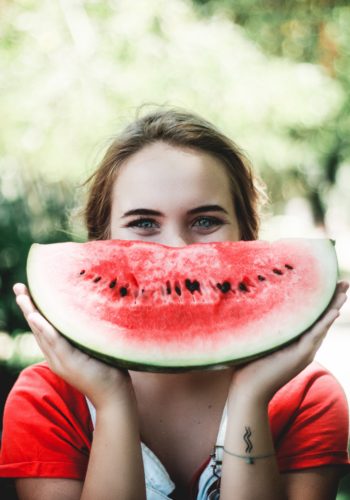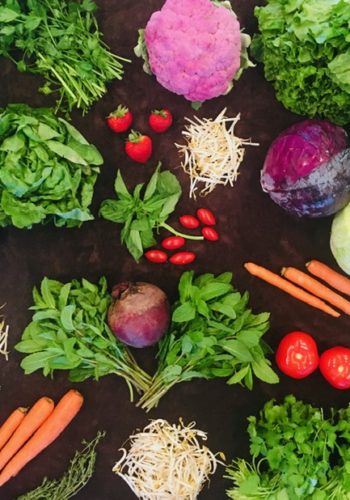
Water – How Much is Enough?
Call it tickle water, fizzy water, or just plain soda water, I love what my new SodaStream produces morning, noon, and night! Suddenly, I find myself actually looking forward to drinking water – or should I say – delightfully sipping a sparkling beverage? Ah…now I can easily get my eight glasses of water each day.
What? I don’t necessarily need to drink 64 ounces of water each and every day?
Despite the lack of scientific evidence, the recommendation for eight 8-ounce glasses of water per day persists. The truth is, fluid requirements can vary significantly among individuals, depending on factors such as weight, physical activity, age, and environmental temperature. Not only that, but water is available to us in myriad forms other than the standard glass of plain old tap water, filtered water from the fridge, bottled water, or even the fancy fizzy water produced from my new SodaStream.
Whoa! Let’s step back. Why is it, again, that we need water?
Well, our bodies are about 60% water and many bodily functions depend on it. Water helps rid the body of waste products (who wants those hanging around anyway?), helps maintain brain function and energy levels (coffee’s not the only beverage that can perk you up), and helps with proper digestion (ahhhh…enough said).
Okay, so there’s no question water is critical to our health, let alone our existence, but the question still remains, how much do we need?
According to the National Academy of Sciences (NAS), women on average, need 2.7 liters (91 ounces) daily, and men require 3.7 liters (125 ounces). But keep in mind, these amounts are averages, and depend on many variables.
So, now you may be really confused.
The recommendation to drink 64 ounces of water daily was already challenging to many, if not most, of us. Now it sounds like the NAS is saying we need to drink even more!
Good news!
The average, sedentary to moderately active individual (or, the average American), that is not out in the hot sun for extended periods of time, does not need to drink anywhere near that amount of water; however, they still may need that amount of water.
Uhm. How do we get water if we don’t drink water?
Water is present in all the beverages lining aisle after aisle in most supermarkets, the drinks we grab from our local coffee shops, the cocktails served at Happy Hour….the list goes on.
Does that mean every beverage contributes to our fluid requirements?
Not necessarily.
- Alcoholic beverages, with the exception of those with lower alcohol contents, can actually be dehydrating. Meaning, for example, if we drink a six-ounce glass of red wine, we need to drink more than six ounces of a hydrating fluid to maintain our hydration level. Lower alcoholic beverages, such as beer (around 5% alcohol) aren’t necessarily dehydrating; however, we can only count about 50% of the total volume of beer consumed toward our fluid requirements.
- Caffeinated beverages, unless consumed in high amounts (greater than 500mg caffeine, or about four or five 8-ounce cups of coffee) do indeed count toward our fluid requirements.
- Fruit juice, while hydrating, should be consumed in limited quantities, if at all, due to the high concentration of sugar (albeit natural) and calories. Eating the whole fruit, in general, is a better choice from a nutritional standpoint.
- Sugary beverages such as soda pop, “fruit-flavored” drinks, etc. count toward meeting our fluid requirements; however, they should be consumed only occasionally, if at all, due to high amounts of sugar, artificial colors and flavorings, and lack of nutritional value.
Water is also present in the foods we eat. Some foods in fact are significant sources of water in our diets. Take a moment and think about it. You can see the juice (mostly water) dripping from the ripe melons, citrus fruits, mango, cucumbers, tomatoes, peppers and lettuce you’re enjoying on those hot summer days. Surely, you’ve been squirted in the eye when your friend across the table bit into a cherry tomato! Think of the soups you eat. There’s water in that soup stock, isn’t there? And where did the water go when you cooked that pan of brown rice? Okay, a little was lost to evaporation, but most of it went into the rice. You get the point.
So, how do you know if you’re getting enough water?
Use the NAS recommendations as a guide, keeping in mind those are averages, so you likely require less if you’re a female that is five feet tall and weighs 100 pounds, and you likely need more if you’re a male that is six feet tall and weighs 230 pounds. Be cognizant of your fluid intake. This means do things like charge yourself up in the morning with a glass of hydrating fluid, perhaps water 😊, drink fluids between meals (this often has the attractive side effect of staving off those mid-morning donut or mid-afternoon candy bar cravings), include water-rich fruits and vegetables in your daily diet, and be sure to consume additional fluids when engaged in physical activity or when in hot weather. Most importantly, listen to your body. If you are thirsty, hydrate.
Alright. Time to wrap it up.
We need water – lots of it – to maintain healthy bodily functions. How much we need varies from individual to individual based on factors such as physical size, activity level, age, and environmental temperature. We can get water in its most obvious form, but also from other beverages as well as many foods. Remember, most alcoholic beverages have a negative effect on hydration levels. Caffeinated beverages are hydrating except when consumed in excessive amounts (i.e. more than 4-5 cups of coffee per day). Incorporate throughout your day, fluids from all of the healthy, hydrating options mentioned, and of course, listen to your body!
LET’S HYDRATE!
Ideas for glamming up that already gorgeous glass of bubbly water from the SodaStream*…
To mix it up a bit, try adding , in amounts to suit your taste, any of the following, and then use your imagination to create even more healthy, tasty ways to hydrate your body:
- Mint
- Cucumber
- Oranges
- Lime
- Lemon
- Strawberries, Raspberries, Blackberries
- Grapes
*Canned and bottled soda waters (i.e. LaCroix, Perrier, etc.) may, of course, be used in place of the soda water produced by the SodaStream; however, another significantly attractive feature of the SodaStream that’s worth mentioning is its environmental friendliness….no more cans and bottles in the recycling bin…just an occasional refill of the CO2 canister.





2 Comments
Kevin Jones
Hi Nicole,
Thank you for sharing this post. I work for a Fortune 500 company. Our employees work in a warehouse environment. Its hot in the Summer and cold in the Winter. As the Wellness chairperson I’m responsible for stressing the importance of daily hydration. We consider it so crucial that we label it one of our top five Wellness habits. I encourage all of our employees to drink water before, during and after their work hours. We have them do this to prevent dehydrate which can lead, if unchecked, to possible heat stroke and potential death. Personally, I stress the importance to drink water after work to reduce fatigue and to get their nutrients moving again. Since our workers work in shifts this information is extremely important to our night and evening workers. We don’t want them falling asleep behind the wheel of the car.
Thanks again
nainsworth44
Hi Kevin! Thank you for your comment. It’s encouraging to hear someone in your position is emphasizing the importance of hydration to their team. Given it sounds like your team is physically active and likely perspiring quite a bit, it’s important to also consider the risk of electrolyte depletion. Depletion of electrolytes can result in symptoms such as dizziness, heart palpitations, headaches, muscle cramps, weakness/fatigue, and vomiting, so keep an eye out for these symptoms among your team members. For those exerting themselves in hot environments (whether inside or outdoors) and those perspiring over extended periods of time, rather than grabbing one of those sugary and artificially flavored and colored electrolyte replacement drinks, I’d encourage them instead to consider reaching for an unsweetened electrolyte-containing drink such as coconut water or adding a pinch of salt to their water bottle. If they are on a sodium-restricted diet, they should speak to their physician first. Keep up the good work, and thanks again for your comment!